There are enough blackberry variations out there in the world today, so you may be wondering what the differences are between a marionberry vs blackberry. Both of these berries look exceedingly similar to one another, but what are their differences, and what might their similarities be beyond their appearance?
In this article, we will address everything you need to know about both marionberries and blackberries so that you can learn how these two fruits differ from one another. We will also address what they are used for and what hardiness zone they grow best in, just in case you are hoping to grow a blackberry plant of your own.
Let’s get started now!
Comparing Marionberry vs Blackberry
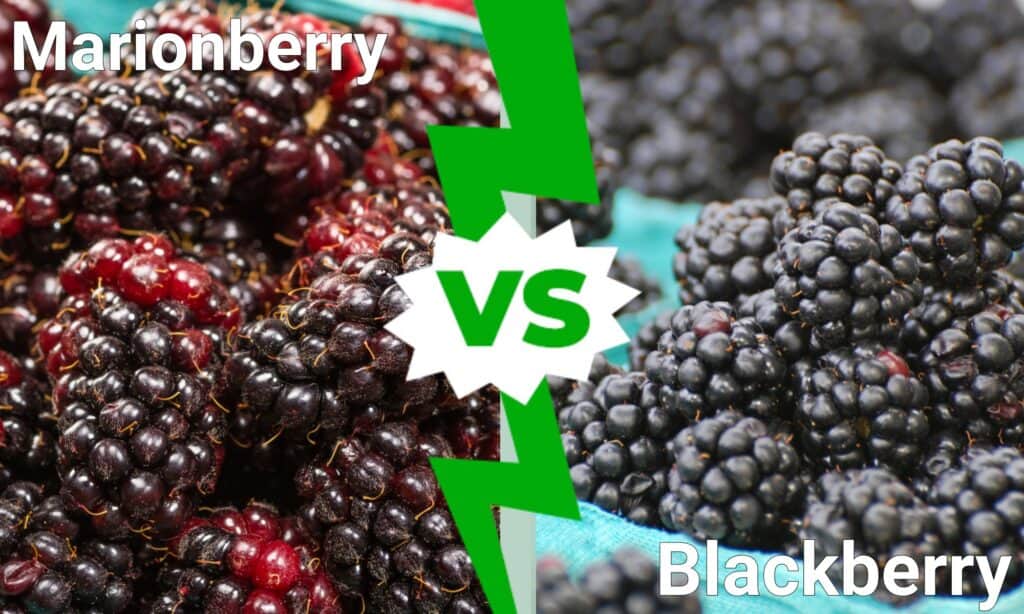
| Marionberry | Blackberry | |
|---|---|---|
| Classification | Rubus, Marion subgenus | Rubus |
| Description | Conical in shape, with a shiny black appearance. Turns a deep purple when cooked or frozen, and larger than the average blackberry. | Rich black colorations and more even in its shape compared to the marionberry. Composed of many small drupelets and changes color while on the vine. |
| Uses | Used throughout the world, particularly in the Pacific Northwest, in culinary applications. Very popular in a savory context, given its rich flavor | Used around the world in jams, pies, and more, or eaten raw. Bitterness makes it less palatable to some, but many blackberry varieties are sweet |
| Hardiness Zones | 7-9 | 5-10 |
| Taste and Texture | Rich flavor, in both sweetness and sourness; aromatic and complex. A much more flavorful blackberry, and firmer | Sour and earthy, with a bit of sweetness. Soft to the touch and juicy, though not as juicy as marionberries |
Key Differences Between Marionberry vs Blackberry
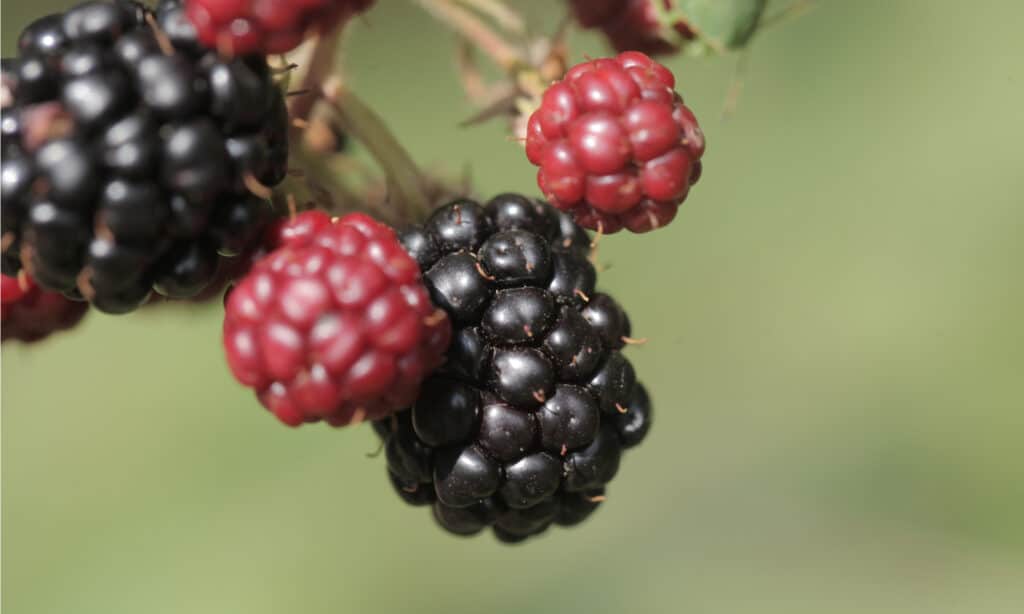
Blackberries can grow in more hardiness zones compared to marionberries.
©Agarianna76/Shutterstock.com
There are a number of key differences between marionberries and blackberries. One of the most important things to note is the fact that all marionberries are blackberries, but not all blackberries are marionberries. Marionberries are a distinct type of blackberry, with more flavor compared to the average blackberry. In addition, blackberries can grow in more hardiness zones compared to marionberries.
Let’s take a look at all of these differences and similarities in more detail now.
Marionberry vs Blackberry: Classification
We’ve already touched upon this briefly, but there is a significant difference in the classification of blackberries versus the classification of marionberries. All marionberries are technically blackberries, given that they are a specific subgenus of the blackberry. However, not all blackberries are marionberries, and there are a dizzying number of blackberry varieties.
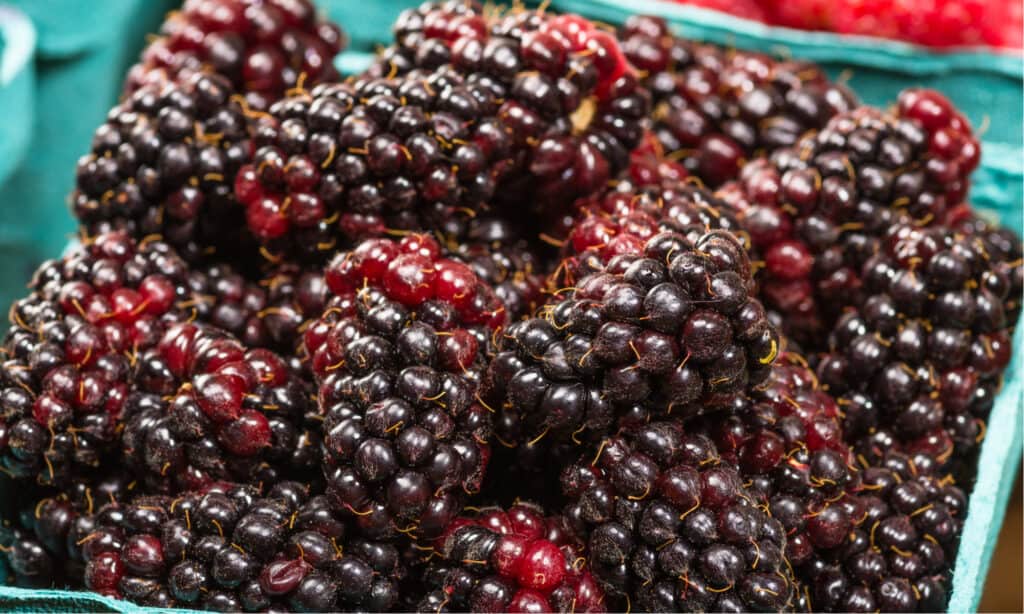
In addition to their larger size, marionberries are also conical shaped compared to the rounded shape of the average blackberry.
©Zigzag Mountain Art/Shutterstock.com
Marionberry vs Blackberry: Description
It can be extremely difficult to tell a marionberry apart from a blackberry just by looking at them. For example, both of these berries are a rich dark black color when they are ripe, and they both change colors when on the vine. However, marionberries are larger than the average blackberry, depending on the variety.
In addition to their larger size, marionberries are also conical shaped compared to the rounded shape of the average blackberry. This essentially means that marionberries are longer than they are wide, While most blackberries have a more evenly shaped appearance to them.
Marionberry vs Blackberry: Uses
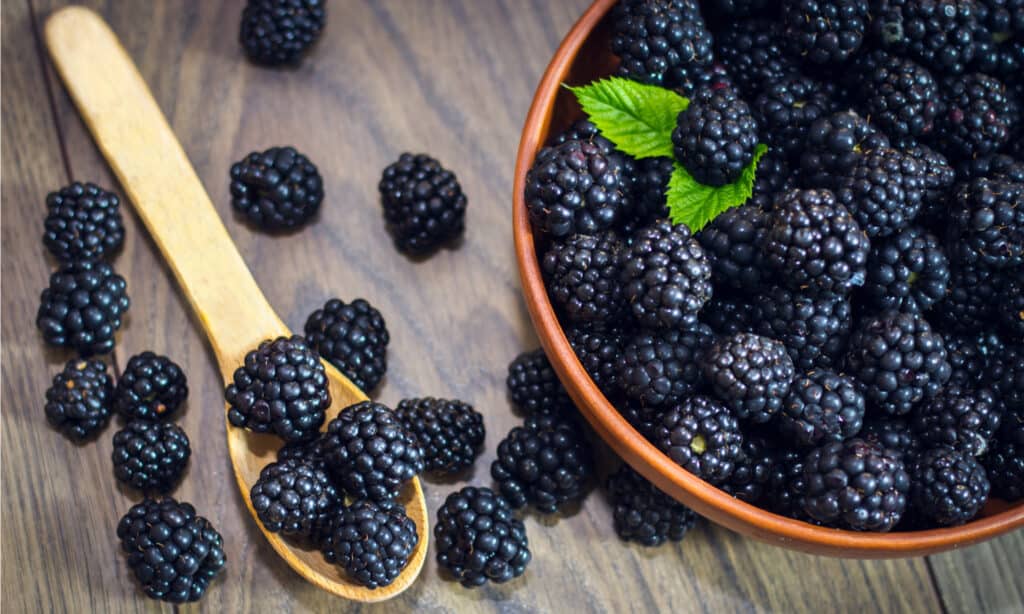
Marionberries are primarily used in the Pacific Northwest where they originated and grow best, while the standard blackberry is used around the world.
©Vipvit/Shutterstock.com
You can arguably use marionberries and blackberries for the same applications, including pies, jams, and many more culinary uses. However, many people consider marionberries to work better in a savory capacity, given their richer and more developed flavor compared to the average blackberry.
Marionberries are primarily used in the Pacific Northwest where they originated and grow best, while the standard blackberry is used around the world. Developed in Marion County, Oregon, the marionberry is infamous in this part of the world, and its harvest lasts about a month before it is gone for the rest of the year!
Marionberry vs Blackberry: Hardiness Zones
Speaking of where the marionberry is grown, both the blackberry and the marionberry have very different hardiness zones that they can drive in. For example, the marionberry grows best in zones 7 through 9, while the blackberry grows in hardiness zones 5 through 10, depending on the variety.
This is why Marion County and the Willamette Valley in Oregon grow marionberries best. Their hardiness zones are fantastic for growing this particular blackberry variety, and the Willamette Valley produces millions of pounds in a single growing season.
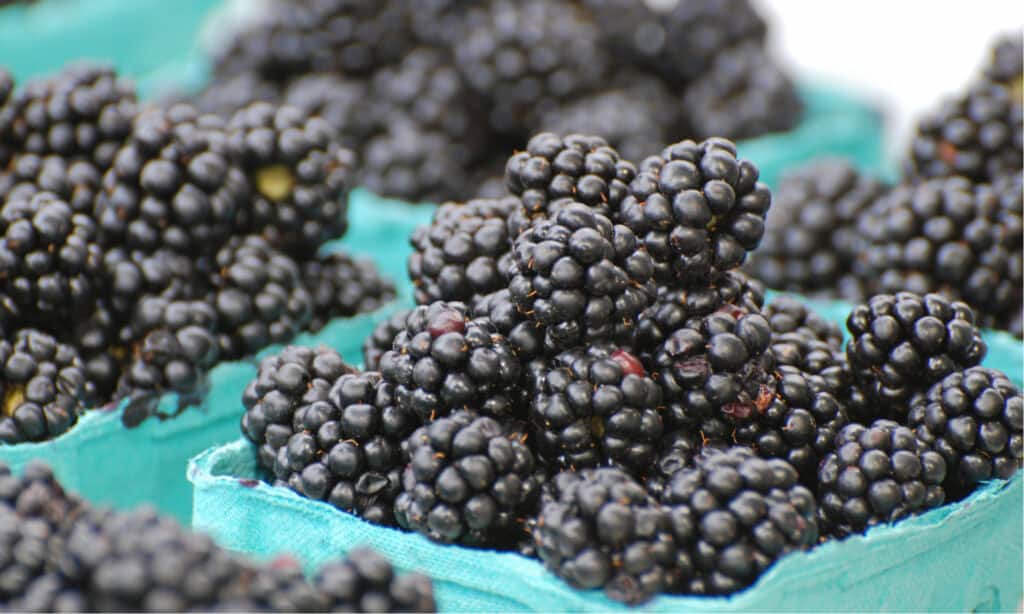
The marionberry grows best in zones 7 through 9, while the blackberry grows in hardiness zones 5 through 10.
©Diane Garcia/Shutterstock.com
Marionberry vs Blackberry: Taste
The final difference between marionberries and standard blackberries has to be their taste. While blackberries are grown around the world and have multiple varieties, the marionberry is prized for its flavor. In fact, many farmers and growers want to sell marionberries more than any other blackberry variety.
Depending on the blackberry variety, most blackberries are more bitter compared to the average marionberry. The marionberry has a highly developed flavor, sweeter and more rich compared to the average blackberry. However, this likely has to do with the freshness of the berry itself, and you likely need to perform your own taste test in order to determine which berry is right for you!
Why are Marionberries Only Grown in Oregon?

Marionberry is only grown in Oregon and doesn’t travel well as they are quick to rot.
©arboursabroad.com/Shutterstock.com
Due to the focus on flavor rather than longevity, these berries aren’t suitable for long-distance transport beyond the Pacific Northwest.
Unfortunately, marionberries are exclusive to the Pacific Northwest as it’s one of the rare regions globally that specializes in cultivating and processing this particular berry variety.
It’s essentially a true native of the state.
The marionberry, which is the result of crossing Chehalem and Olallie blackberries, was cultivated at Oregon State University in collaboration with the U.S. Department of Agriculture, a partnership that has roots dating back to the early 1900s.
The photo featured at the top of this post is © Diane Garcia/Shutterstock.com
Thank you for reading! Have some feedback for us? Contact the AZ Animals editorial team.






